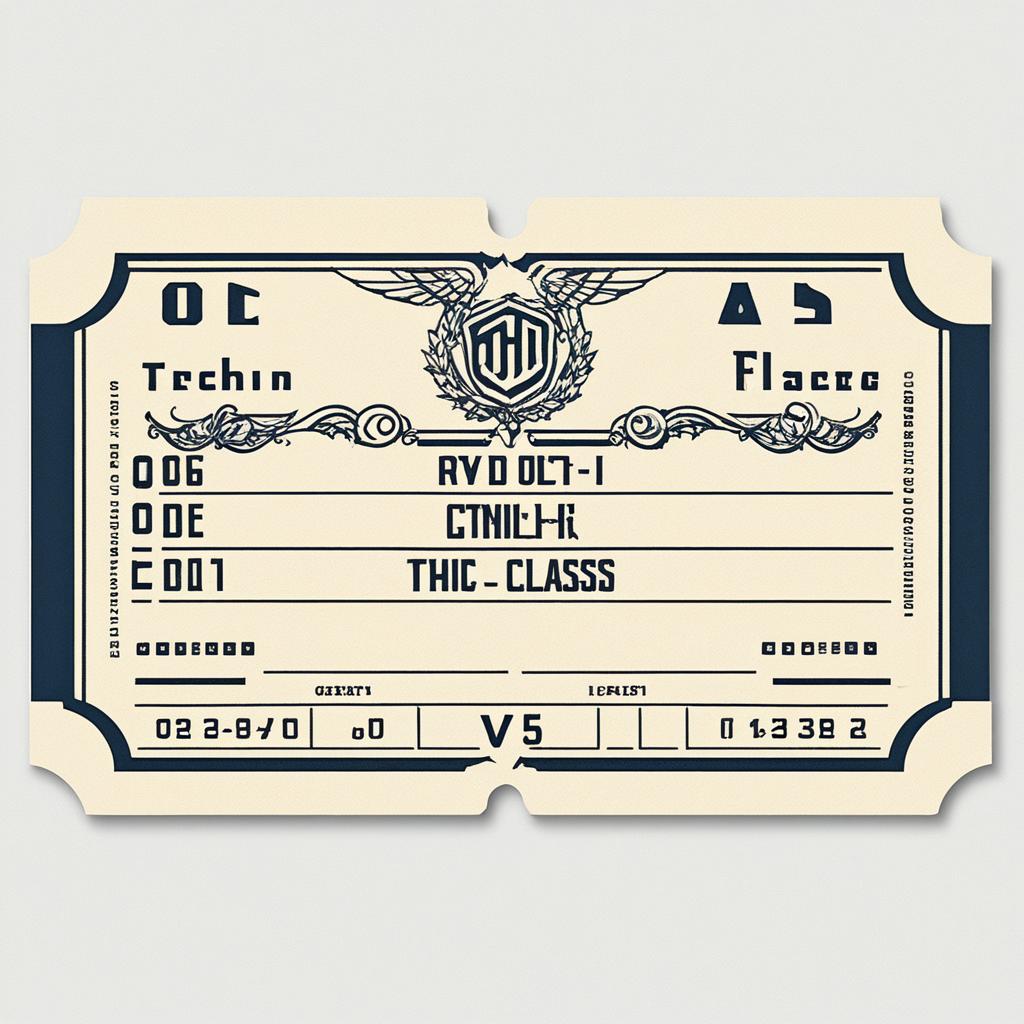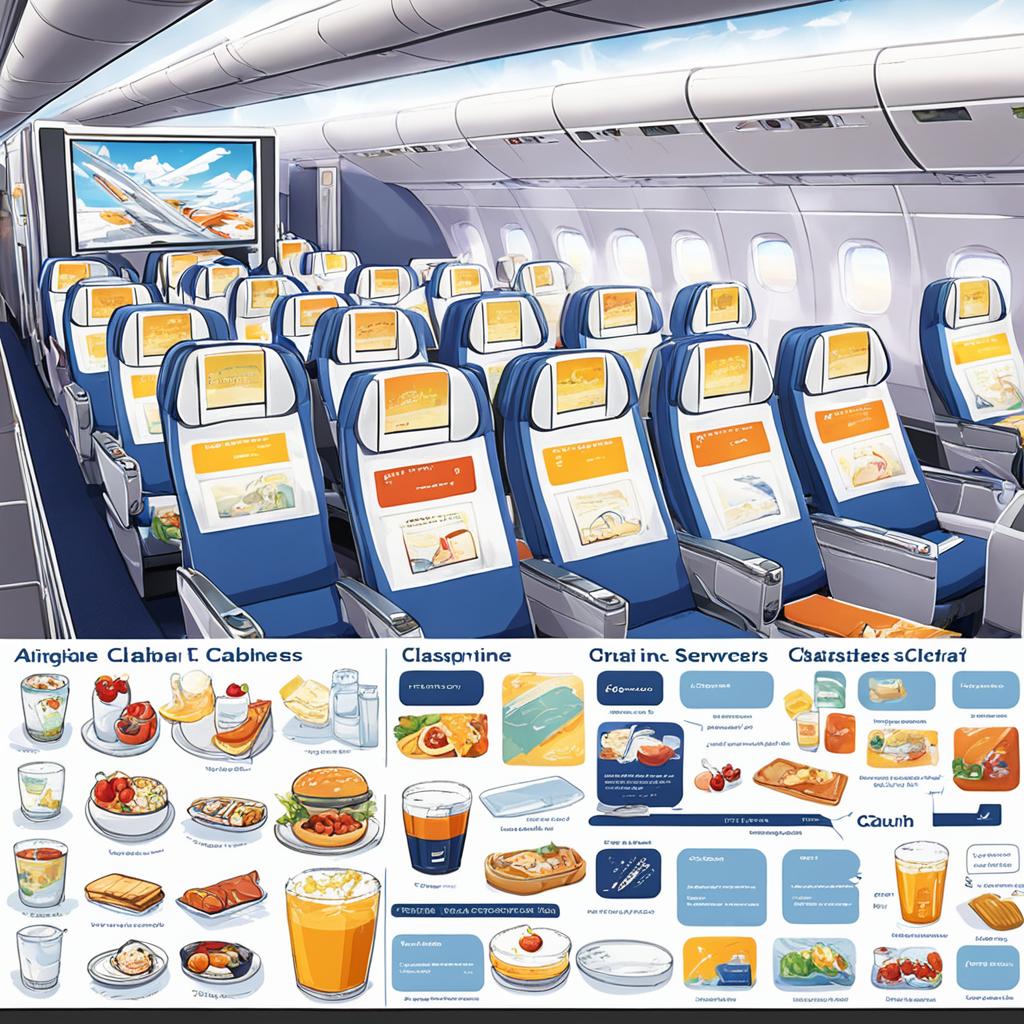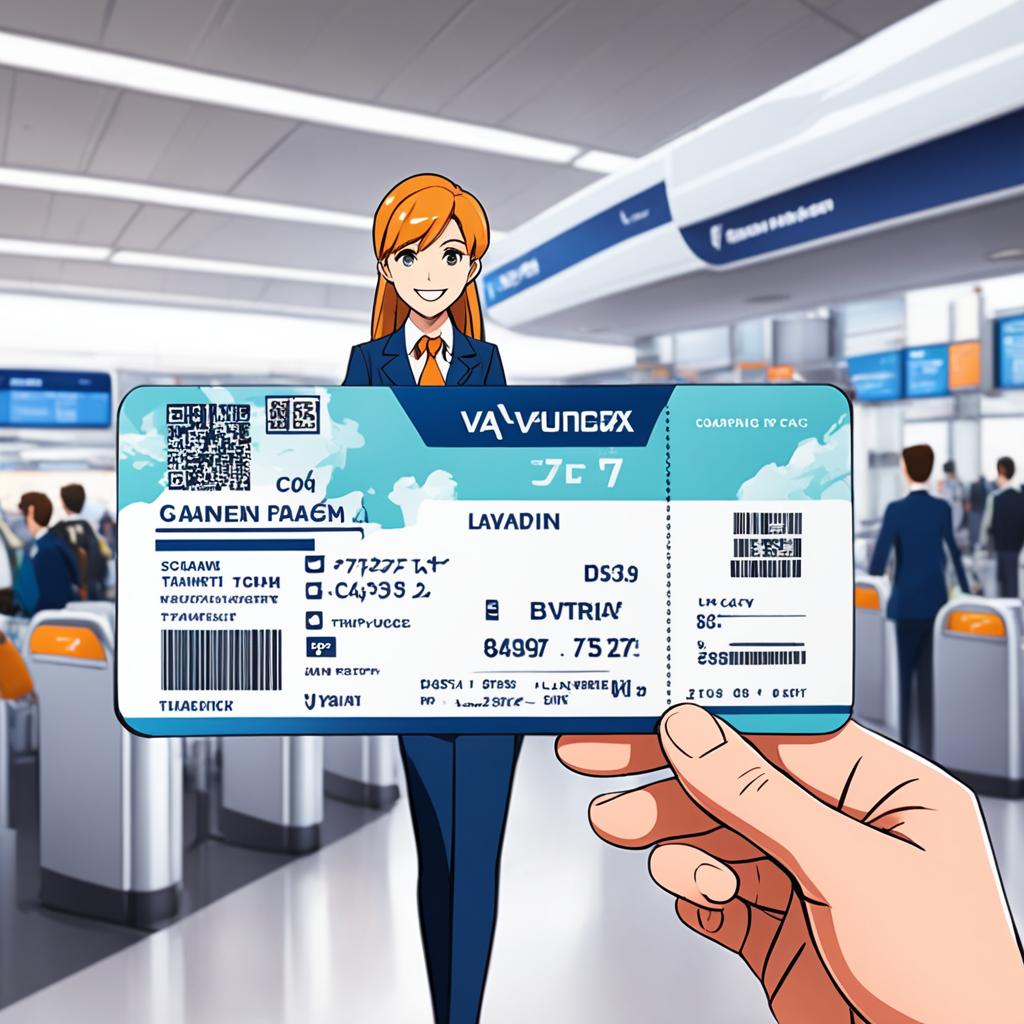When booking a flight, have you ever come across the term “Class V” and wondered what it means? Is it a luxury class like first or business class, or something entirely different?
Class V is actually a specific fare class associated with discounted economy tickets on airlines. It falls under the economy category but comes with its own set of restrictions and limitations. Understanding what Class V entails can help you make more informed decisions when booking flights based on cost and ticket flexibility.
Intrigued? Let’s dive deeper into the world of Class V tickets and uncover what makes them unique.
Read on to discover the ins and outs of Class V and how it affects your travel experience.
History of Airline Classes

In the early days of the airline industry, everyone flew in the same cabin and paid the same fare. However, in the mid-1950s, airlines started offering a separate class with more amenities, such as larger seats, taking inspiration from the railroads. This led to the development of two-class cabins, consisting of first class and economy class. Later, business class became common on international routes, offering a higher level of service. As the industry evolved, airlines introduced discounted fares to attract leisure travelers and created additional fare classes, including Class V.
Characteristics of Class V Tickets

Class V tickets are a type of fare associated with discounted economy fares. These tickets are identified by a fare type code that begins with the letter V. When booking a flight, it’s important to understand the characteristics and potential restrictions that come with Class V tickets.
Here are some key features of Class V tickets:
- Fare Type: Class V tickets belong to a specific fare class within the economy category.
- Restrictions: Class V tickets may have certain restrictions, such as limitations on travel dates, minimum and maximum stay requirements, and advance purchase requirements.
- Refundability: Class V tickets may have restrictions on refundability, potentially limiting your ability to receive a full refund if you need to cancel your trip.
- Flight Changes: Class V tickets may have limitations on flight changes. It’s important to check the fare rules and any associated fees before making changes to your itinerary.
- Advance Seat Assignment: Class V tickets might have restrictions on advance seat assignments. This means that you may not be able to choose your seat in advance or may have limited options for selecting your preferred seat.
It’s essential to review the fare rules and specific terms and conditions when purchasing Class V tickets. This will help you understand the limitations and restrictions associated with this fare class. Keep in mind that while Class V tickets offer discounted prices, they may come with certain trade-offs in terms of flexibility and reservation options.
Having a clear understanding of the characteristics of Class V tickets can help you make informed decisions when booking your next flight. By considering the fare type, restrictions, and limitations, as well as the potential impact on advance seat assignments, you can ensure a smoother travel experience and avoid any unexpected surprises.
Inventory Management and Availability of Class V Tickets
In the world of airline inventory management, Class V tickets play a crucial role. These tickets are part of the airline’s fare class system and have their own unique booking class code, typically designated as V. The booking class code determines the priority of sale within the inventory management system, impacting the availability of seats.
Inventory management is a complex process that involves analyzing passenger demand, fare pricing, and optimizing revenue for the airline. The availability of tickets, including Class V, is closely tied to this process. Airlines prioritize the sale of tickets based on fare categories and revenue generation.
Higher-priced tickets, such as full-fare economy tickets, generally have a higher booking class code. This means that they are given priority in terms of availability and are available until all the seats are sold. On the other hand, Class V tickets, which are discounted economy fares, may have a lower booking class code, resulting in limited availability.
It’s important to note that the availability of Class V tickets might not always align with the number of remaining seats on a flight. This is because airlines anticipate higher fares for those seats as the flight date approaches. As a result, even if there are empty seats, Class V tickets might be sold out.
To give you a better understanding of the inventory management and availability of Class V tickets, let’s take a look at the following table:
| Booking Class Code | Ticket Fare Type | Seat Availability |
|---|---|---|
| V | Class V (Discounted Economy) | Limited |
| Y | Full-Fare Economy | Available until all seats sold |
| J | Business Class | Available until all seats sold |
This table illustrates how booking class codes and fare types impact seat availability. As you can see, Class V tickets have limited availability compared to full-fare economy (Y) and business class (J) tickets. This highlights the importance of considering ticket availability, fare types, and booking class codes when planning your flight.
Understanding the dynamics of inventory management and the availability of Class V tickets can help you make informed decisions when booking your flights. Keep in mind that ticket availability can fluctuate due to factors such as demand, booking patterns, and the airline’s revenue strategy. Being aware of these factors can increase your chances of securing the desired ticket at the best possible price.
Considerations when Booking Class V Tickets
When it comes to booking Class V tickets, there are a few important considerations to keep in mind. One of the key factors is ticket availability, which can vary throughout the booking period. Airlines utilize sophisticated software programs to estimate demand for each flight several months in advance. These programs take into account various factors such as departure time, day of the week, and time of year to determine seat demand and maximize revenue.
However, despite the advanced algorithms, booking patterns can change unexpectedly, leading to fluctuations in ticket availability. This means that lower fares associated with Class V tickets can suddenly reappear if the actual demand falls short of the airlines’ initial expectations. So, if you’re eyeing a Class V ticket and initially find it unavailable, it’s worth checking back periodically to see if the availability has changed.
Another aspect to consider is the impact on frequent flyer miles. Class V tickets may not always offer the same mileage credit as other fare classes. Depending on the airline and frequent flyer program, the mileage earned for Class V tickets might be different, and certain mileage bonuses or upgrade options may not apply. It’s advisable to review the terms and conditions of your program to understand how Class V tickets could affect your mileage accumulation and potential benefits.
Before booking Class V tickets, it’s essential to weigh the trade-offs. While they often come with lower costs compared to other fare classes, they might also have certain restrictions. For example, Class V tickets may have limitations on flight changes, advance seat assignments, and refundability. If ticket flexibility is crucial to you, it’s essential to consider these restrictions beforehand.
Overall, Class V tickets can offer a more affordable way to travel, but it’s essential to be aware of the potential limitations. Stay informed about ticket availability, keep an eye on booking patterns, and understand how they may impact your frequent flyer miles. By being mindful of these considerations, you can make well-informed decisions when booking Class V tickets.
Overview of Airline Cabin Classes

When booking a flight, it’s important to understand the different cabin classes airlines offer. Most airlines provide four main cabin classes: economy, premium economy, business, and first class. Each class offers varying levels of comfort, services, and amenities to cater to different travelers’ needs and preferences.
Economy Class: Also known as coach or standard class, economy is the most basic cabin class available on flights. It is designed to provide cost-effective travel options for passengers. Economy class seats are often narrower and offer limited legroom. Despite this, economy class still provides a comfortable and affordable option for travelers.
Premium Economy: Positioned between economy and business class, premium economy offers a more enhanced and comfortable flying experience compared to regular economy. Passengers in premium economy enjoy slightly wider seats, additional legroom, and increased recline. This class provides a more spacious and relaxed environment without the higher cost of business or first class.
Business Class: Business class is a premium cabin class that offers an elevated level of comfort and service. Passengers in business class enjoy a range of amenities, including lie-flat seats, enhanced meal options, priority boarding, and access to airport lounges. This class is designed for business travelers or those seeking a luxurious and comfortable journey.
First Class: The highest level of service and luxury on a flight is offered in first class. First-class passengers experience the utmost comfort and personalized service throughout their journey. This class typically features spacious and fully reclining seats, exclusive onboard amenities, gourmet dining options, and dedicated cabin crew assistance. First class is ideal for those seeking the ultimate travel experience.
To better understand the distinctions between these cabin classes, refer to the table below:
| Cabin Class | Seat Characteristics | Services and Amenities |
|---|---|---|
| Economy Class | Narrow seats with limited legroom | Basic onboard services, meals for purchase |
| Premium Economy | Slightly wider seats with extra legroom | Enhanced services, priority boarding, improved meal options |
| Business Class | Lie-flat or angled seats, increased legroom | Luxurious amenities, premium meals, dedicated cabin crew |
| First Class | Spacious and fully reclining seats | Exclusive amenities, gourmet dining, personalized service |
Understanding the differences between airline cabin classes can help you make an informed decision when booking your next flight, ensuring you select the class that best suits your travel requirements and preferences.
Premium Economy Class on North American Airlines
Premium economy class is a step up from regular economy class, providing a more comfortable and enhanced flying experience. When traveling with North American airlines, you have the option to choose premium economy seating, which offers several advantages over standard economy.
In premium economy, you can enjoy additional legroom that allows for more comfort during your flight. The seats are also typically wider, providing a spacious and cozy seating option. These improved seating options make a significant difference, especially on long-haul flights, where passenger comfort is a priority.
Moreover, premium economy passengers on North American airlines receive various amenities to enhance their journey. Depending on the specific airline, these amenities can include priority boarding, access to premium lounges, complimentary or upgraded food and beverages, increased baggage allowance, and amenity kits. Additionally, premium economy seats are often located in more desirable sections of the aircraft, allowing for a quieter and more relaxed environment.
Choosing premium economy offers a balance between the affordability of economy class and the luxury of business or first class. It is ideal for travelers who desire enhanced comfort and amenities without the expense of higher-class options. Many North American airlines provide premium economy as a valuable choice to make your journey more enjoyable and ensure a pleasant flight experience.
FAQ
Q: What is Class V on a flight?
A: Class V is a specific fare class associated with discounted economy tickets on airlines. It is a sub-class of economy and is typically characterized by certain restrictions and limitations. Tickets in Class V often have lower costs compared to other fare classes but may come with limitations on flight changes, advance seat assignment, and refundability.
Q: What is the history of airline classes?
A: In the mid-1950s, airlines started offering a separate class with more amenities, such as larger seats, inspired by the railroads. This led to the development of two-class cabins, consisting of first class and economy class. Later, business class became common on international routes, offering a higher level of service. As the industry evolved, airlines introduced discounted fares to attract leisure travelers and created additional fare classes, including Class V.
Q: What are the characteristics of Class V tickets?
A: Class V tickets are typically associated with discounted economy fares. They may have restrictions on travel dates, minimum and maximum stay requirements, advance purchase, and refundability. Class V tickets may also limit flight changes or require additional fees for changes. Additionally, these tickets might have restrictions on advance seat assignments, potentially limiting passengers’ ability to choose their seats in advance.
Q: How does inventory management affect the availability of Class V tickets?
A: Class V tickets are included in the inventory management system of airlines and have a specific booking class code, usually designated as V. Booking class codes prioritize the sale of tickets within the system based on revenue generation for the airline. Availability of Class V tickets can vary throughout the booking period as demand and fares fluctuate.
Q: What should I consider when booking Class V tickets?
A: The availability of Class V tickets can vary depending on booking patterns and demand. Lower fares associated with Class V can suddenly reappear if demand falls short of expectations. It’s also important to note that the mileage credit for frequent flyer programs may vary for Class V tickets, and certain mileage bonuses or upgrade options may not apply.
Q: What are the different airline cabin classes?
A: Most airlines offer four cabin classes: economy, premium economy, business, and first class. Economy class is the most basic class, while premium economy offers a more comfortable experience than regular economy. Business class provides enhanced services, and first class offers the most luxurious and spacious seats, personalized service, and exclusive amenities.
Q: What is premium economy class on North American airlines?
A: Premium economy class is a category that offers a more comfortable and upgraded experience than regular economy class. North American airlines offer premium economy seating options with additional legroom, wider seats, and various amenities. Passengers in premium economy generally enjoy a more comfortable journey without the higher cost of business or first class.
